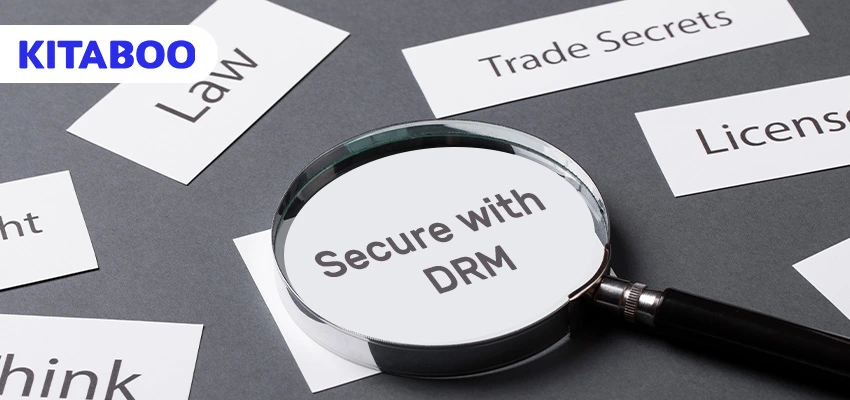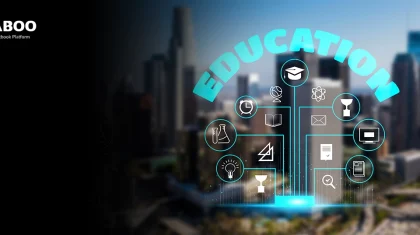
Secure Your Intellectual Property: The Importance of DRM for Member-Based Organizations
Summarize this blog with your favorite AI:
For member-based organizations (societies and associations), the importance of digital content and various copyright laws covering such content is immense. However, these can be hard to navigate and enforce, especially when you have no idea about who will have access to your digital content.
So how do you prevent the misuse or unauthorized use of digital content either as a content creator or publisher, you wonder?
This is where digital rights management (DRM) comes in. DRM is a unique technology that helps you take a proactive approach to safeguard the intellectual property of your member-based organization. Leveraging this technology, you can prevent unauthorized users from distributing, sharing, or simply accessing your digital content without permission.
In this post, we will explore more about DRM for member-based organizations and its significance in safeguarding their intellectual property.
Table of Contents:
I. What is Digital Rights Management?
III. Importance of DRM for Member-Based Organizations
- Ensuring Compliance & Mitigating Legal Risks
- Protecting Intellectual Property Rights
- Safeguarding Confidential Information
IV. To Summarize
What is Digital Rights Management?
Digital Rights Management is an umbrella term that combines various methods specifically designed to control access and unauthorized distribution of digital content.
For member-based organizations specifically, DRM serves as an important tool for safeguarding Intellectual Property rights. Thus, it prevents the unauthorized distribution of digital content and ensures compliance with various regulatory requirements and licensing agreements.
DRM technology employs several techniques, including encryption, access control, and digital watermarking. These techniques ensure optimum document protection by restricting or limiting how digital content can be accessed, copied, or distributed.
Leading digital textbook platform KITABOO offers extensive DRM security. It offers a range of features that enable you to secure the integrity and value of your digital content without having to compromise the user experience.
The Key Components of DRM
Digital Rights Management is an approach that operates through a combination of different technologies that control access to digital content. Typically, it has three different key components, as discussed below:
1. Encryption
Encryption is the main component of DRM technology where the digital content is scrambled in a way that only people with the correct code can access or read it.
In the context of DRM for associations and other member-based organizations, encryption ensures that the digital content is adequately protected from unauthorized use.
2. Access Control
Another component of document security and DRM for associations is access control which is mainly about deciding who can use the content available online and how.
Most DRM systems such as KITABOO DRM often require users to either login or authenticate themselves before they can access the content. This allows organizations to ensure that only authorized users can view or access their digital products.
3. Usage Restrictions
Usage restrictions are rules that limit users on what they can do with the online content once they have access to the same.
These restrictions are specifically designed to protect the creators’ intellectual property rights and prevent any unauthorized sharing or copying of digital content.
Importance of DRM for Member-Based Organizations
DRM ensures that consumers have legitimate access to the digital content they’ve legally purchased or licensed while preventing unauthorized copying or distribution of digital content.
Here is why implementing Digital Rights Management strategies for eBooks and other digital content is crucial for associations and societies:
1. Ensuring Regulatory Compliance
Most member-based organizations follow strict regulatory compliance and licensing agreements. Failure to comply with these regulations and agreements can lead to various legal risks and financial implications for the organization.
Digital Rights Management systems can help these associations, societies, and other similar organizations maintain all compliance-related requirements by limiting access to digital content and limiting usage as well.
2. Safeguarding Intellectual Property Rights
Intellectual Property rights in every member-based organization is the fundamental aspect of new innovations. Lack of adequate protection can cause these organizations to face severe financial setbacks and loss of reputation as well.
DRM technology plays a key role in safeguarding these rights by preventing or limiting any kind of unauthorized access, distribution & access of digital content.
3. Safeguarding Confidential Information
Apart from intellectual property, digital rights management technology plays a key role in protecting sensitive information, such as personal credentials, business data, and medical or financial records.
Leveraging DRM technology here can prevent malicious data breaches, safeguard intellectual property, and help maintain the confidentiality of confidential information.
Beyond preventing unauthorized content sharing and duplication, DRM may also incorporate several additional functionalities, such as:
- Imposing restrictions on copying or printing or text from digital content
- Limiting the total number of devices on which a user can access their digital content
- Offering limited lending capabilities, such as allowing users to lend digital files to an acquaintance for a specified period.
To Summarize
At its core, DRM technology seeks to balance the interests of member-based organizations, content creators, and consumers. It enables societies and associations to monetize their work and maintain control over their intellectual property.
With a good digital rights management (DRM) system in place with all print and copy controls, user tracking, and watermarks, you can eliminate or significantly reduce the chances of such content piracy from occurring.
However, what is important here for ensuring secure distribution of the digital content is choosing a robust digital publishing platform that allows you to DRM-protect the digital content of your member-based organization.
While there are several publishing platforms available in the market, KITABOO is one of the best choices to explore in the segment. A highly secure cloud-based eBook distribution platform, KITABOO ensures that all your digital content remains encrypted and DRM-protected with unique codes to access it.
Additionally, KITABOO also allows you to securely distribute the digital content of your associations and trusts on various platforms and multiple devices including smartphones, tablets, or PCs.
Contact our expert team to learn more about KITABOO and get started!
Also Check:
Discover how a mobile-first training platform can help your organization.
KITABOO is a cloud-based platform to create, deliver & track mobile-first interactive training content.



